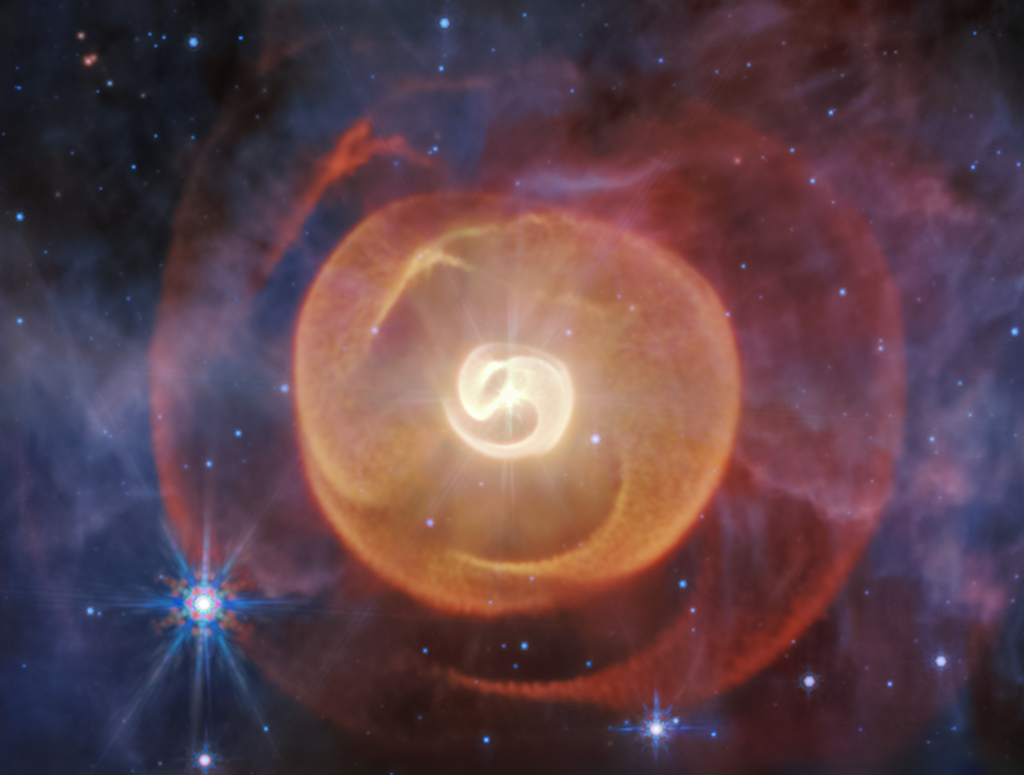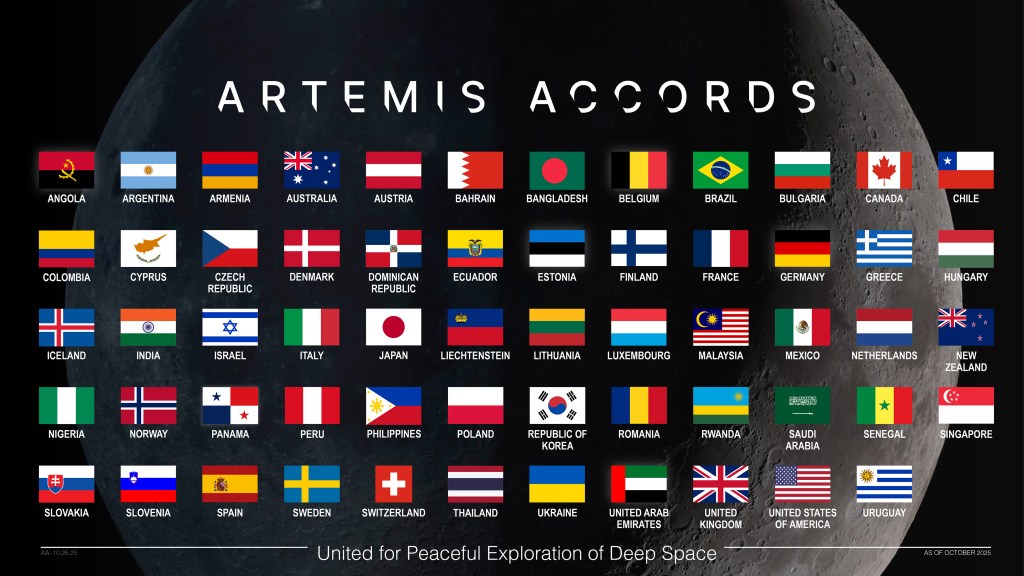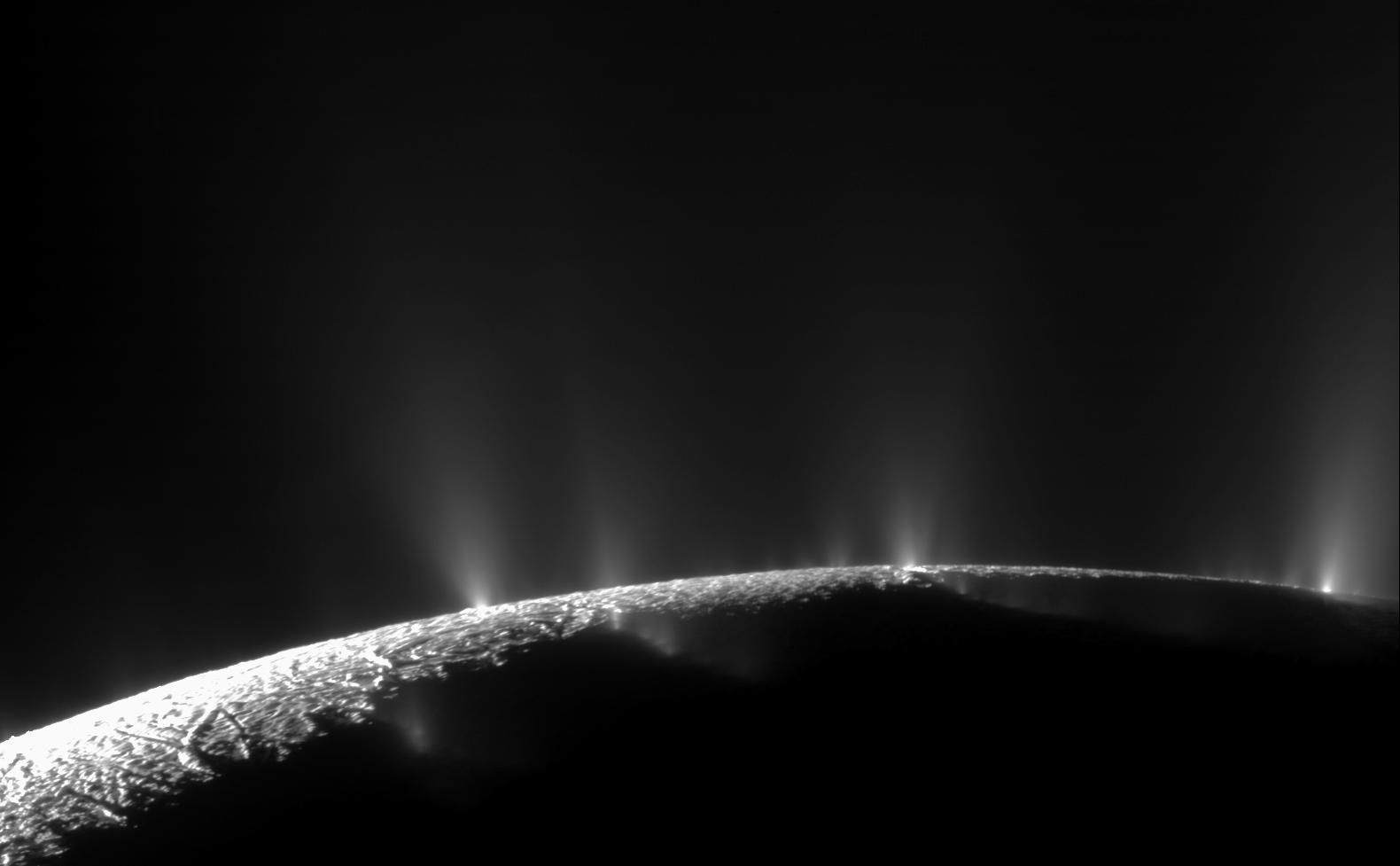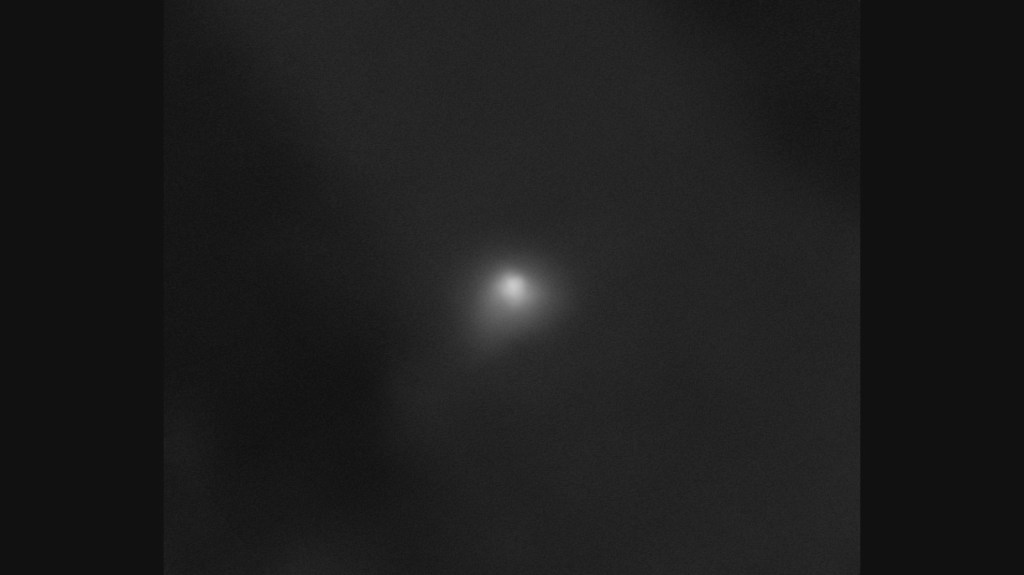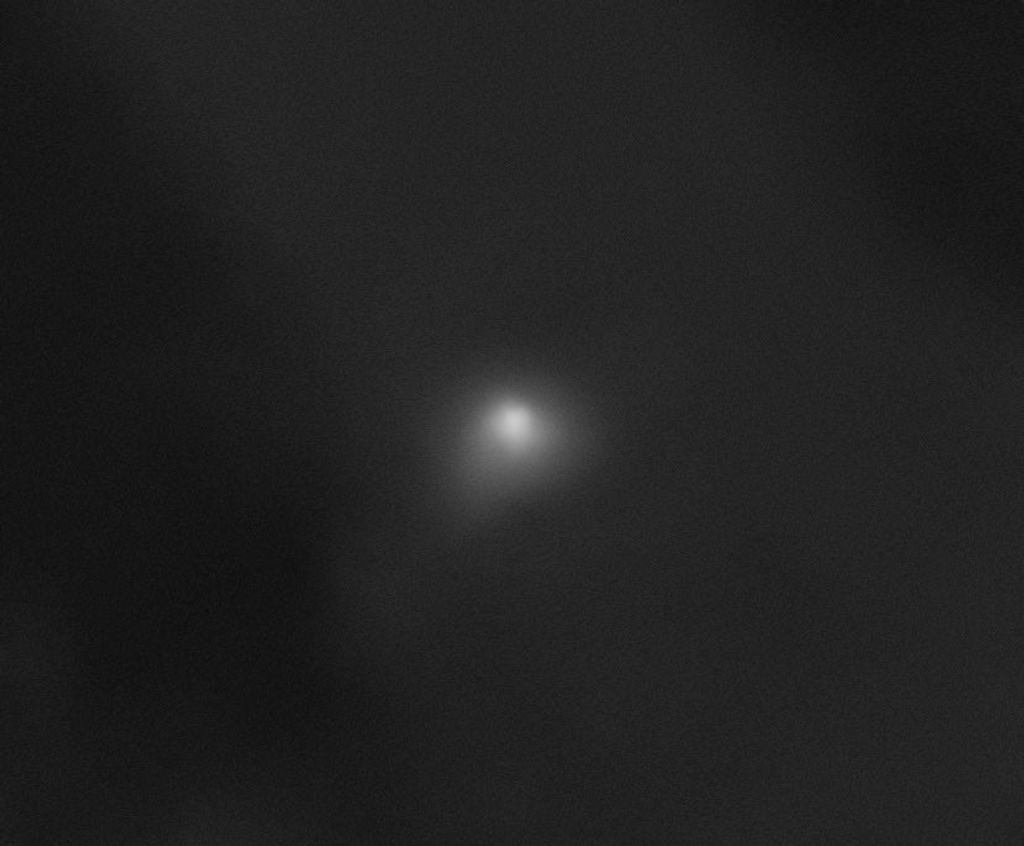1 min read
Circumstellar Disk HD 61005

About the Object
- R.A. PositionR.A. PositionRight ascension – analogous to longitude – is one component of an object's position.07h 35m 47.45s
- Dec. PositionDec. PositionDeclination – analogous to latitude – is one component of an object's position.-32° 12' 14.04"
- ConstellationConstellationOne of 88 recognized regions of the celestial sphere in which the object appears.Puppis
- DistanceDistanceThe physical distance from Earth to the astronomical object. Distances within our solar system are usually measured in Astronomical Units (AU). Distances between stars are usually measured in light-years. Interstellar distances can also be measured in parsecs.100 light-years or 31 parsecs
About the Data
- Data DescriptionData DescriptionProposal: A description of the observations, their scientific justification, and the links to the data available in the science archive.
Science Team: The astronomers who planned the observations and analyzed the data. "PI" refers to the Principal Investigator.HST Proposal: 10527 D. Hines (Space Science Institute, New Mexico Office in Corrales, New Mexico). The science team comprises: D. Hines (Space Science Institute, New Mexico Office in Corrales, New Mexico), G. Schneider (University of Arizona) , D. Hollenbach (NASA Ames), E. Mamajek (Harvard-Smithsonian Center for Astrophysics), L. Hillenbrand (California Institute of Technology), S. Metchev (University of California, Los Angeles), M. Meyer (University of Arizona), J . Carpenter (California Institute of Technology), A. Moro-Martin (Princeton University), M. Silverstone (Eureka Scientific, Cary, NC), J. Serena Kim (University of Arizona), and T. Henning, J. Bouwman, and S. Wolf (Max Planck Institute for Astronomy, Heidelberg, Germany). - InstrumentInstrumentThe science instrument used to produce the data.HST>NICMOS
- Exposure DatesExposure DatesThe date(s) that the telescope made its observations and the total exposure time.November 20, 2005; June 18, 2006, Exposure Time: 1.3 hours
- FiltersFiltersThe camera filters that were used in the science observations.F110W (J-band)
- Object NameObject NameA name or catalog number that astronomers use to identify an astronomical object.HD 61005, The Moth
- Object DescriptionObject DescriptionThe type of astronomical object.Star with Circumstellar Structure
- Release DateJanuary 10, 2008
- Science ReleaseCircumstellar Dust Takes Flight in ‘The Moth’
- CreditNASA, D. Hines (Space Science Institute, New Mexico Office in Corrales, New Mexico), and G. Schneider (University of Arizona)

Compass and Scale
Compass and ScaleAn astronomical image with a scale that shows how large an object is on the sky, a compass that shows how the object is oriented on the sky, and the filters with which the image was made.
Related Images & Videos
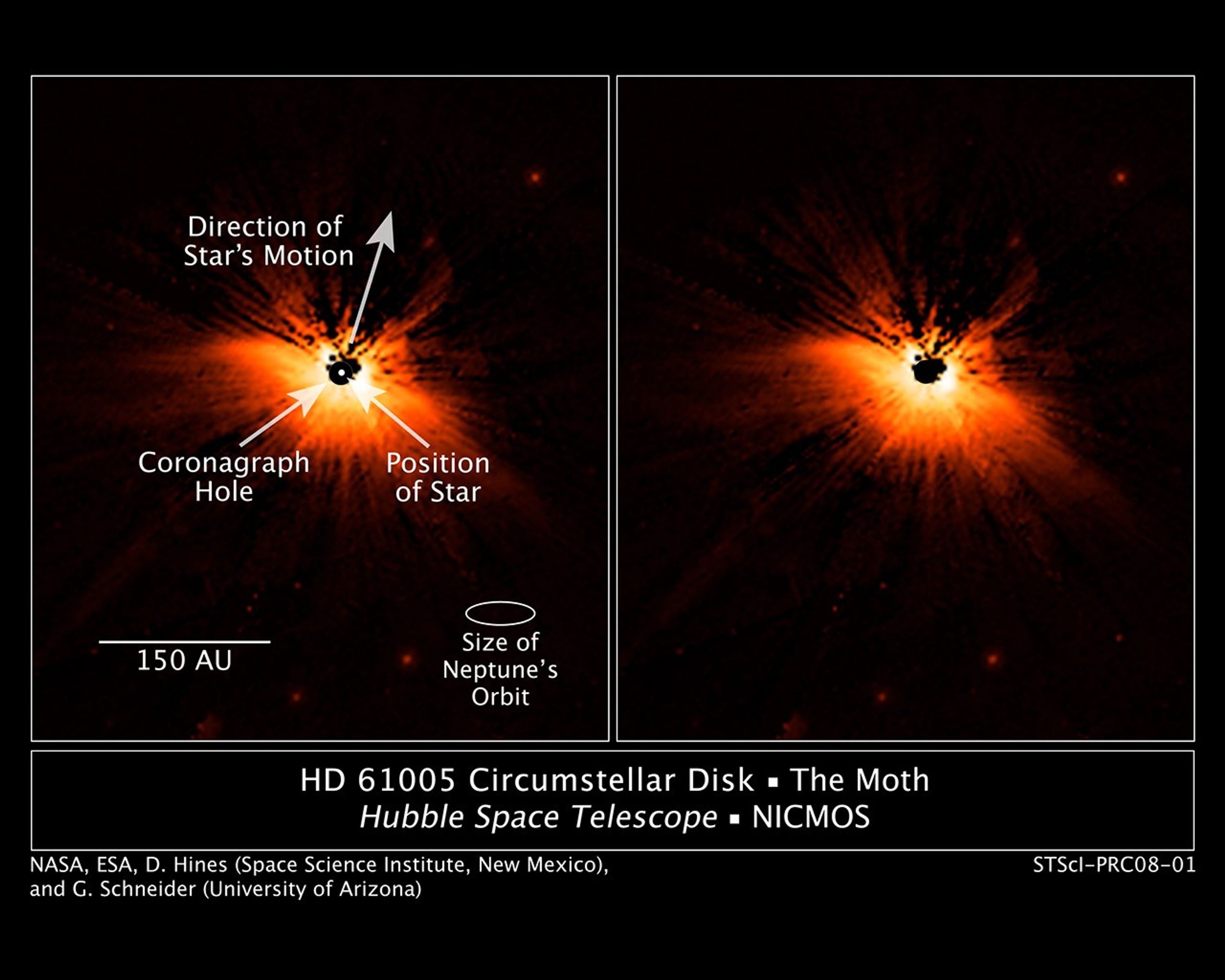
Hubble Catches a Dusty Moth
These near-infrared images, taken with the Near-Infrared Camera and Multi-Object Spectrometer (NICMOS) aboard NASA's Hubble Space Telescope, show the wing- shaped dust disk surrounding the young, nearby star HD 61005. Astronomers have dubbed the star system "The Moth" because...
Share
Details
Last Updated
Aug 17, 2025
Contact
Media
Claire Andreoli
NASA’s Goddard Space Flight Center
Greenbelt, Maryland
claire.andreoli@nasa.gov

